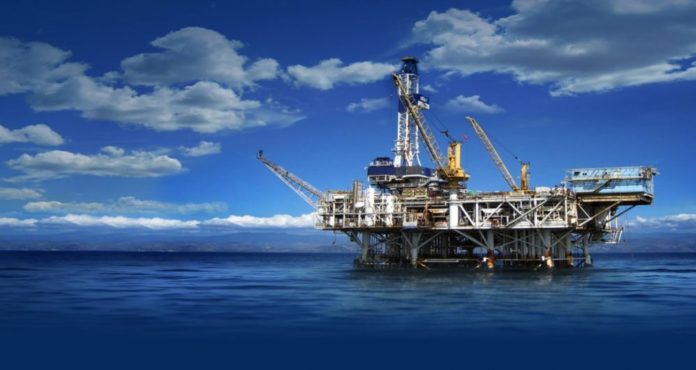Internet of Things (IoT) solutions are producing significant and sustainable results for Oil & Gas companies. These organizations envision long-term solutions that enable sustainable growth and efficient internal processes. Cost minimization, increased efficiency, and automated manual processes can lead the way in achieving these goals. Other IoT-based solutions have employed advanced analytics to improve equipment management.
Holistic Operational Management of LNG Well Sites
Larger scale companies deal with over a thousand well sites. One IoT case study involved the introduction of new wells on a daily basis. The company needed all these sites to go online and offline efficiently without sacrificing data retrieval across different locations.
Automated data collection only covered one way to address the wells’ expansion and the high data volume transferred among sites. In addition, business requirements mandated that data collection be fast and reliable despite the site’s massive physical infrastructure. It also required an IoT solution that could deal with the data’s tendency to be in constant flux.
In the said IoT case study, one solution was able to meet the scalability requirements for high data volume and connectivity of large sprawling well infrastructure. The automated IoT process communicated the massive amounts of data for data visualization. It also provided long-term storage for further analysis and auditing. Its operation fulfilled its primary objective of gathering near real-time data from a thousand well sites. Overall, the automated well data communication process successfully replaced a manual, unreliable process, bringing offline wells online faster and connected to the rest of the infrastructure for a holistic view of the entire well operation across geographically dispersed well sites.
Internet of Things Prevents Costly Valve Leaks
Oil refinery equipment is prone to wear and tear. As such, flare control valves end up leaking hydrogen and hydrocarbon and cannot close completely after overpressure opens up the valves. Some leaks can cost as much as $1,800 per hydrogen vented, escalating to hundreds of thousands of dollars in losses if leaks are not closed off quickly. Current method is a manual process – manual identification, reporting, escalation, technician availability, travel time, parts, repair, and issues closed. Over the course of the life of an oil refinery plant, it requires millions of dollars on troubleshooting. In the current dire Oil & Gas market environment, costly manual troubleshooting processes are no longer acceptable.
To mitigate potential leaks, an IoT monitoring system was employed to provide continuous surveillance across all the flare control valves. This IoT solution utilized wireless acoustic transmitters and wireless gateways for communication. The acoustic monitoring network provides notifications and data visualization on the operation of the valves and gives early indications to prevent valve leaks.
In a few months of implementation, the refinery saved a significant amount from preventing hydrogen and hydrocarbon loss; savings reached $500,000 for lost hydrogen, while lost hydrocarbons savings were at $200,000.
Optimization and Cost Reduction of Dispersed Operations
Oil and gas sites are often located in harsh, remote environments. Oil & Gas companies are challenged in obtaining reliable, real-time data to manage their assets across geographically dispersed locations. That includes gathering, storing, and processing data reliably at each sites and then aggregating across sites to have a total view of the entire business. Currently, site data come at various frequencies in various data formats and data management and analytics is a painful manual process that often does not provide meaningful data for weeks to months, thus leading to management by fire.
One particular IoT implementation successfully overcame the challenges from oil field’s remote locations and harsh environments to deliver reliable, near real-time data for proactive business management. Robust data gathering and infrastructure management across oil field sites reduced downtime costs and lengthened the machinery’s lifespan through better data-driven maintenance.
The system also cut power usage by 43 percent and saved $60,000 annual at each site, optimizing site performance no matter the workload and the harsh environmental conditions.
Assuring Worker Safety and Equipment Maintenance
Remotely operated vehicles (ROVs) offer safe and risk-free maintenance for both oil field workers and their stakeholders. Thus, ROVs reduce the number of workers sent to offshore sites. Further, operators at onshore operational centers can control and monitor ROVs remotely far away from the dangers of offshore drilling.
ROVs aren’t the only technologies that can enable safe, remote monitoring. IoT-enabled cameras and sensors on each vessel create near real-time data for onshore users. IIoT technologies work hand in hand with the networking and communications service to record and transmit data and video from remote locations.
IIoT and emerging technologies such as unmanned aerial systems (UAV), drones, autonomous surface vehicles, automated guided vehicles, and autonomous underwater vehicles can gather data on an offshore oil field, without the need to put humans in harms way.
Leaner Cost Management
Cost management necessitates streamlining every aspect of oil & gas operations from exploration, production, storage, refinery, distribution to logistics. Therefore, operations must handle the required volume of work and manage mandatory pricing to be profitable. Further, cost control also depends heavily on the efficient extraction of hydrocarbons. In addition, a company must also consider how they’ll penetrate new and existing markets with the help of developing technologies.
One production optimization solution aims to address some of these cost related issues. The solution combines physics-based models and advanced data analytics to improve the performance of reservoirs, wells, and surface facilities. Therefore, it will be one of the first integrated systems to combine IoT, cloud computing, and advanced data analytics to attain near complete asset management.
The platform’s first objective is on the improvement of wells management. Rod-lift systems would address this goal and then later on extend it to different lift forms. Eventually the integrated technology will tackle optimization and management of reservoir and surface-facility levels.
IoT is a Must in the Current Oil & Gas Market Conditions
IoT technologies aren’t just a means to upgrade field and plant technologies. Smarter IoT solutions are able to remove manual, costly and unreliable processes to reduce costs, optimize operations, and provide worker safety. Efficient maintenance processes and better data management supported by IoT is expected to save Oil & Gas companies millions of dollars over the lifetime of a site. The current weakness in the Oil & Gas commodities market necessitates investment in IoT to turnaround unprofitable operations in this difficult market climate.


















